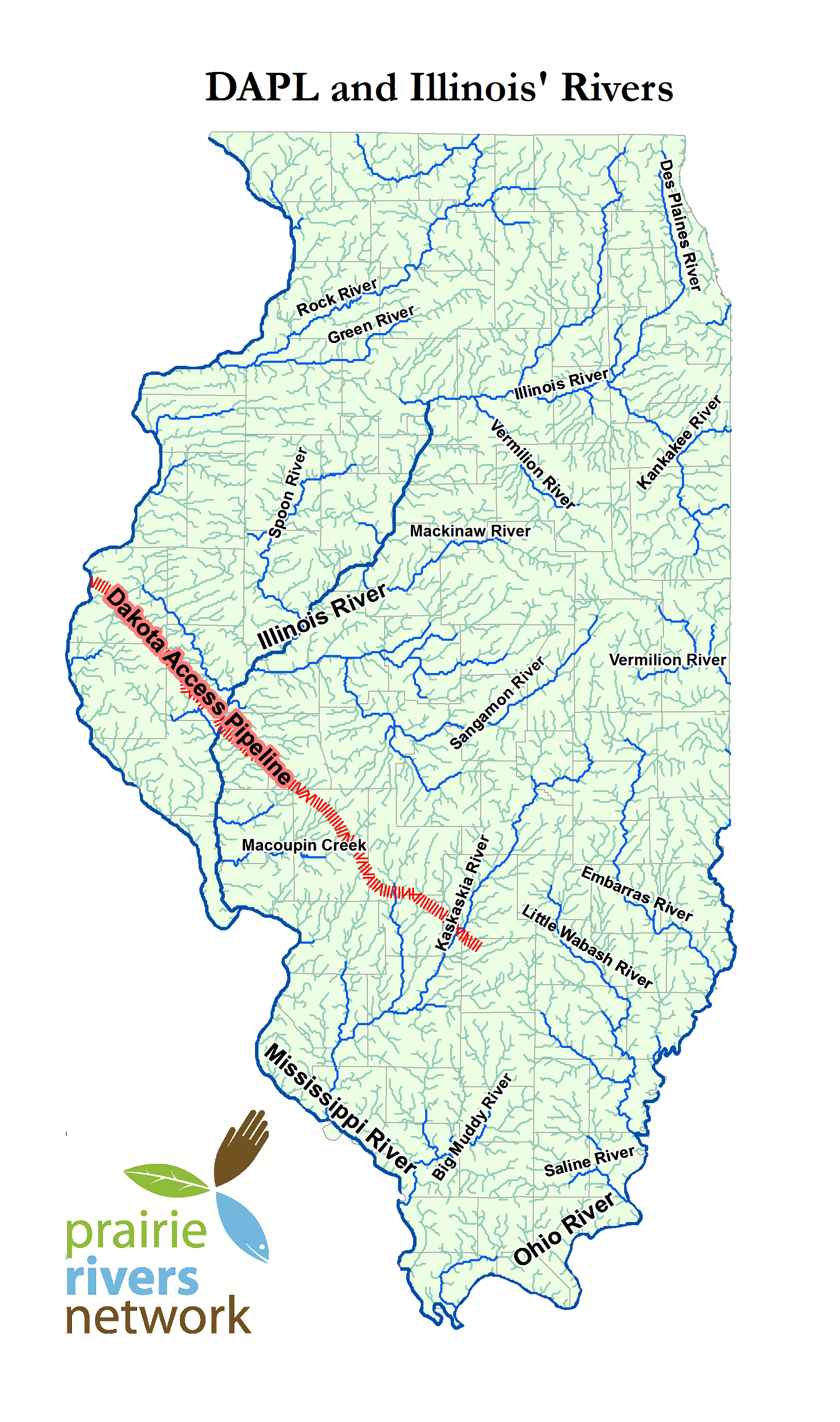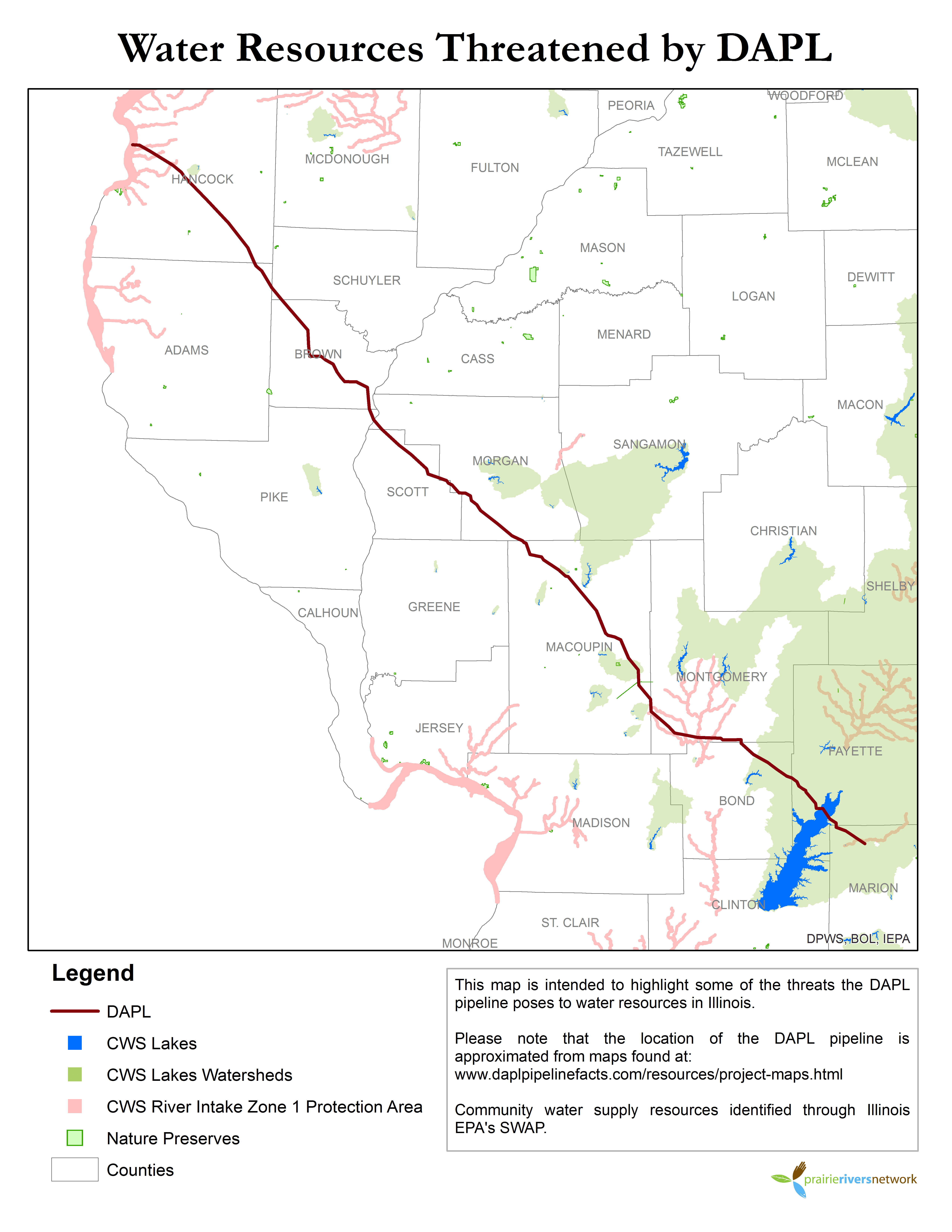
We’re gambling with the drinking water of the people of Illinois.
The Dakota Access Pipeline is a partially constructed pipeline, over a thousand miles long and two and a half foot wide, that would carry crude oil from North Dakota to Illinois. In North Dakota, protests of the pipeline by members of the Standing Rock Sioux tribe, and those who stand with the tribe, have garnered national attention.
Pipelines burst every day. A Wall Street Journal investigation found 1400 pipeline spills nationally in just 4 years between 2010 and 2013. That is essentially one a day. They’re common enough that you can find a running list of major pipeline spills in the US on Wikipedia. According to the WSJ investigation, four out of every five of these spills were discovered by local residents – not the pipeline operators. The burden of detection falls on the people who live on the land, who often wake up to disaster on their property.
Prairie Rivers Network has completed an analysis comparing the pipeline’s path to the Illinois EPA designated community water supply lakes and river intakes. We found that the pipeline puts the water supply of 27,382 people at risk in Illinois (see maps below). The towns threatened by the pipeline include Carlinville, Carlyle, Greenville, Hamilton, Modesto, Nauvoo, Patoka, Palmyra, Sorento, Warsaw and the communities with which these towns share their water supply. Should the pipe burst, these water supplies could be damaged.

Over 180 miles of this pipeline are in Illinois. The Dakota access pipeline will cross many of Illinois’ major rivers like the Mississippi River, the Illinois River, and the Kaskaskia River. However, the pipeline doesn’t just cross big rivers. The Dakota Access Pipeline crosses at least 56 named rivers in Illinois: Apple Creek, Macoupin Creek, Mauvaise Terre Creek, Sandy Creek, Shoal Creek, Hurricane Creek, Flour Creek, Walnut Creek, Otter Creek, Brea Creek, Cedar Creek…and the list goes on. Any number of unnamed tributaries may also be crossed by the pipeline. Each of these, any of these, is threatened by this pipeline.
The Dakota Access Pipeline also represents a national commitment to fossil fuels, making climate goals harder to achieve. It will prop up an industry that damages our waters and lands, and kills our wildlife. Energy Transfer, the company behind the pipeline, will reap the profits from this pipeline, but the people and the land will carry the risk.







